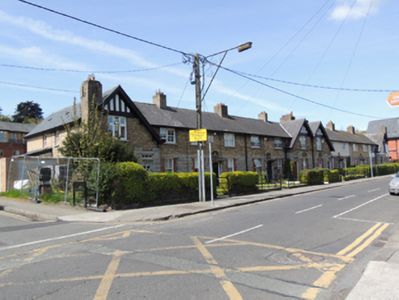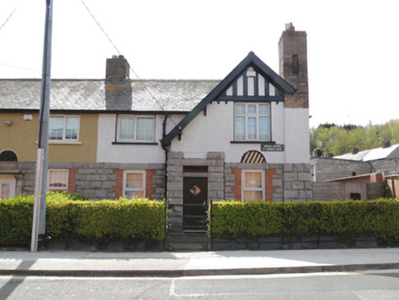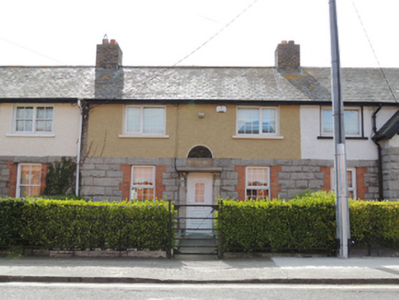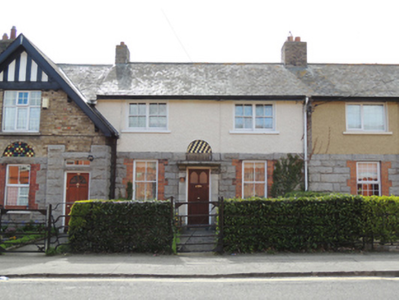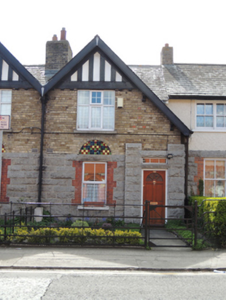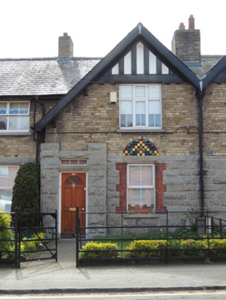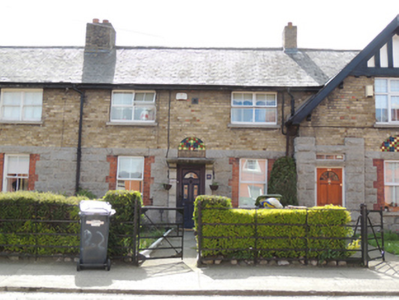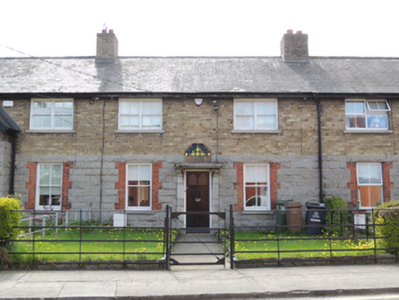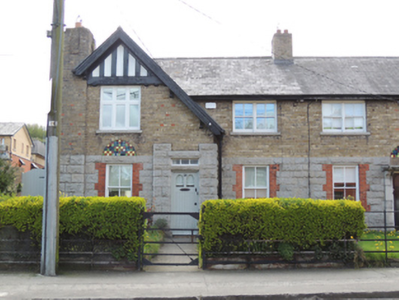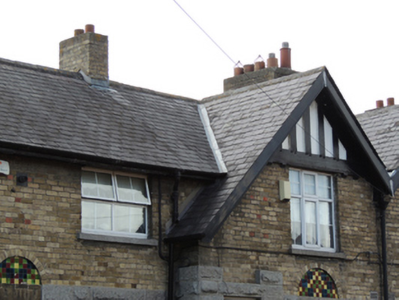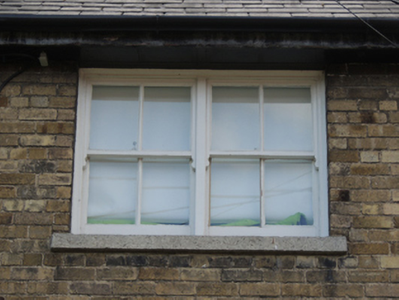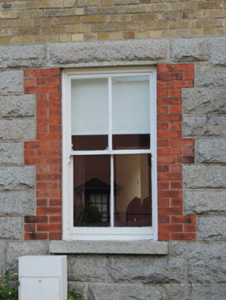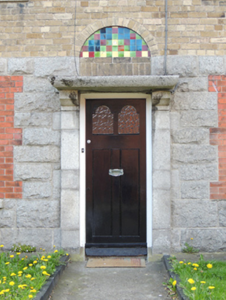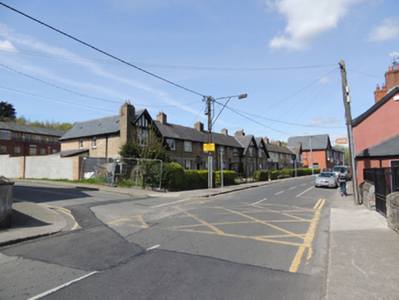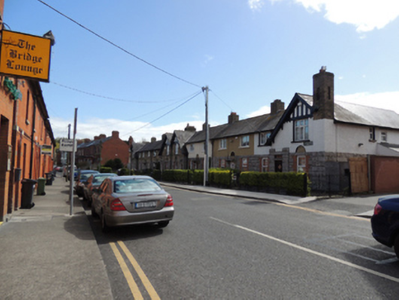Survey Data
Reg No
50080357
Original Use
House
In Use As
House
Date
1910 - 1920
Coordinates
310219, 234243
Date Recorded
29/04/2013
Date Updated
--/--/--
Description
Terrace of eight two-storey houses, built c.1915, comprising pair of gable-fronted two-bay two-storey houses to centre, flanked by two pairs of three-bay houses, with terminating gable-fronted three-bay two-storey houses. Pitched slate roofs with clay ridge tiles and yellow brick chimneystacks having projecting chimneybreasts to terminating houses. Rusticated cut granite walls to ground floor front and side elevations, with yellow brick walls laid in English Garden Wall bond to first floor of front elevation and rear elevation. Some render to first floor. Round-headed blind arch of coloured tiles over ground floor window of projecting houses, and over door of recessed houses. Square-headed window openings with cut granite sills, having red brick block-and-start surround and rusticated granite lintel to ground floor. Some two-over-two pane timber sash windows, bipartite to first floor, some replacement uPVC windows. Square-headed door openings, with timber panelled and glazed doors and replacement doors. Overhanging granite lintel on carved granite brackets over door of recessed three-bay houses. Plain overlight to doors of projecting houses. Gardens to front, having wrought-iron railings and matching pedestrian gates.
Appraisal
This terrace of houses is an example of the on-going development of urban domestic dwellings in Dublin in the early years of the twentieth century. Although some windows have been lost, much historic fabric is retained. The use of rusticated granite and yellow brick provides a textural and visual contract between the ground and first floor. The terrace was designed by Thomas Joseph Byrne, architect for South Dublin Rural District Council. Byrne was responsible for the erection of hundreds of labourers’ houses in south County Dublin, and also designed the then radical layout of Ceannt Fort in Mount Brown. The use of coloured tiles, the textural variation, the asymmetrical gables, and the windbreaks to the doors are all typical of Byrne's distinctive style.

